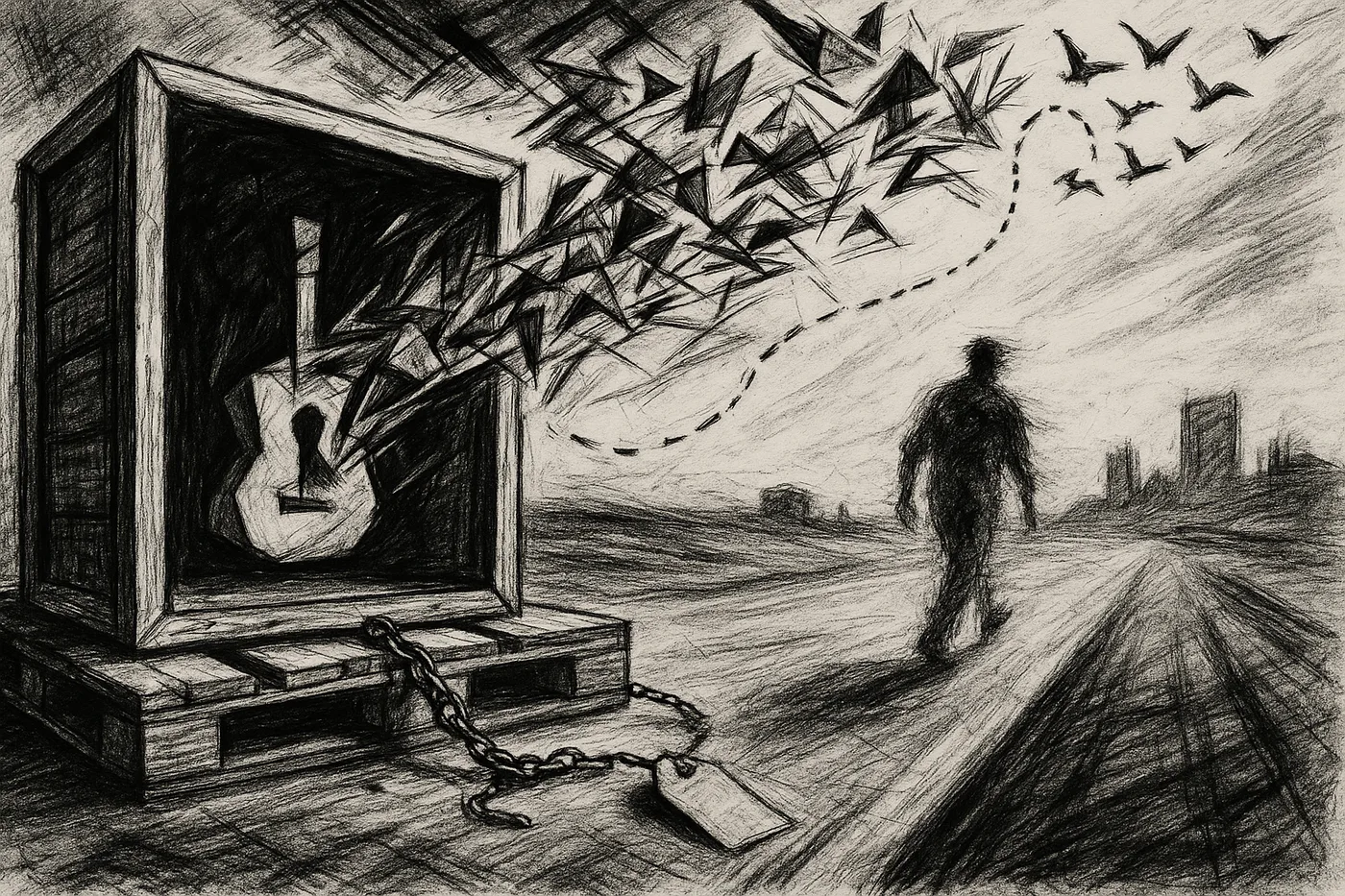TLDR: A €600,000 Picasso vanished during a routine Madrid-to-Granada museum loan, exposing how art transport relies more on trust than security—60% of transit claims are for climate damage, recovery rates for stolen masterpieces hover at 10-20%, and insider access plus weak protocols turn every road trip into a potential heist.
You ship a package. Track it. Trust the system. Somewhere between point A and point B, it vanishes. Now imagine that package is a 1919 Picasso worth €600,000.
In October 2025, "Naturaleza muerta con guitarra" (Still Life with Guitar) disappeared during a routine trip from Madrid to Granada. The painting left its museum, headed for the CajaGRANADA arts centre to star in an exhibition about still life. It never arrived.
Spanish police suspect an inside job. Weeks later, there are no suspects, no leads, no painting. Just a €600,000 question mark and a gaping hole in the supposedly secure chain of art transport.
This isn't a Hollywood heist. It's a quiet unraveling that reveals how the systems protecting our cultural treasures are held together with far more hope than we'd like to admit.
The Disappearing Act
October 6, 2025. The small gouache and pencil work—a jewel from Picasso's synthetic Cubist phase—was packed and loaded for the exhibition "Bodegón: La eternidad de lo inerte." The route was standard. The protocols were followed. The shipment arrived at its destination.
Without the Picasso.
The Spanish National Police launched an investigation through their specialized art crime unit. The immediate suspicion: someone on the inside. Someone who knew the route, the timing, the weak spots. The transport company's name? Undisclosed. Security details? Kept quiet. The painting? Gone.
It's a frustratingly clean crime. The kind that makes you wonder: if a half-million-euro masterpiece can just evaporate between two Spanish cities, what does that say about the invisible scaffolding holding our art world together?
What We Don't See: The Real Dangers of Moving Art
Forget the movie version with laser grids and armed convoys. The truth is far less cinematic—and far more troubling.
Up to 60% of all damage claims for art in transit come from temperature shifts, humidity changes, and vibrations. A bumpy road can crack gouache paint. A poorly ventilated truck can warp a canvas. For smaller institutions without blockbuster budgets, cost-cutting on specialized packaging becomes a gamble: save a few hundred euros now, risk losing a masterpiece forever.
Then there's theft. GPS tracking and security escorts sound reassuring until you realize they can't stop someone with insider access and a plan. Routes through unstable regions create new vulnerabilities. And once a piece is stolen? The recovery rate for major art thefts hovers around 10-20%. Those aren't Vegas odds.
The CajaGRANADA Foundation—the nonprofit expecting this Picasso—now joins a long list of institutions learning that the chain of trust protecting art is only as strong as its most underpaid, overworked, or corruptible link.
Picasso's Ghost Collection
Here's the thing about Picasso: he's absurdly easy to steal. Or maybe it's that his work is so iconic, thieves can't resist.
This isn't his first disappearing act. In 2012, "Tête d'Arlequin" was stolen from Rotterdam's Kunsthal and never recovered. In 2010, thieves broke into a Paris museum and grabbed five paintings, including "Le Pigeon aux Petits Pois," valued at €25 million. That one likely ended up in a dumpster when the thief realized nobody on the black market would touch it. Stealing a Picasso is like stealing a Mona Lisa—good luck selling something everyone on earth recognizes.
Sometimes the motives get weird. In 1986, Australian activists swiped "Weeping Woman" to protest arts funding cuts. They eventually returned it, but not before giving the art world a collective heart attack.
Some works resurface. "Portrait of Suzanne Bloch" was recovered in 2007 in São Paulo. But many more join a ghost collection—masterpieces that exist only in photographs and art history textbooks. The 2025 "Naturaleza muerta con guitarra" disappearance is just the latest haunting in Picasso's afterlife.
When a Painting Vanishes, So Does a Story
When this painting slipped away, Spain lost more than €600,000 worth of canvas and pigment. It lost a page from the story of modern art.
Picasso's still lifes from this period were revolutionary. They helped dismantle centuries of artistic convention and rebuild it as Cubism. Each lost work is a missing puzzle piece in understanding how one Spanish painter helped reshape human creativity. That piece now exists somewhere in a shadow world—maybe in a collector's private vault, maybe destroyed, maybe waiting in a storage unit for a thief who'll never be able to sell it.
The pattern repeats globally. Budget cuts weaken security. Inadequate protocols create openings. International cooperation remains sluggish. Meanwhile, our collective cultural heritage slowly erodes, one stolen canvas at a time, victims of greed, incompetence, or spectacularly bad luck.
The low recovery rates aren't just statistics. They're obituaries for artworks that should belong to everyone but now belong to no one.
The Art That Keeps Slipping Away
So a small Picasso is missing somewhere between Madrid and Granada. It might surface tomorrow. It might join the ghost collection. Either way, "Naturaleza muerta con guitarra" isn't just a crime story—it's a window into how fragile the systems protecting our greatest creative achievements really are.
For every masterpiece hanging safely behind museum glass, there are others lost to systems held together with insufficient funding, questionable protocols, and the naïve hope that nobody will notice the gaps. The velvet ropes and security cameras create an illusion of safety that disappears the moment a painting hits the road.
The best we can do? Appreciate the art we still have access to. And maybe ask harder questions about the unsexy logistics that determine whether a Picasso makes it to its destination—or becomes another cautionary tale about trusting the invisible scaffolding beneath our cultural treasures.

